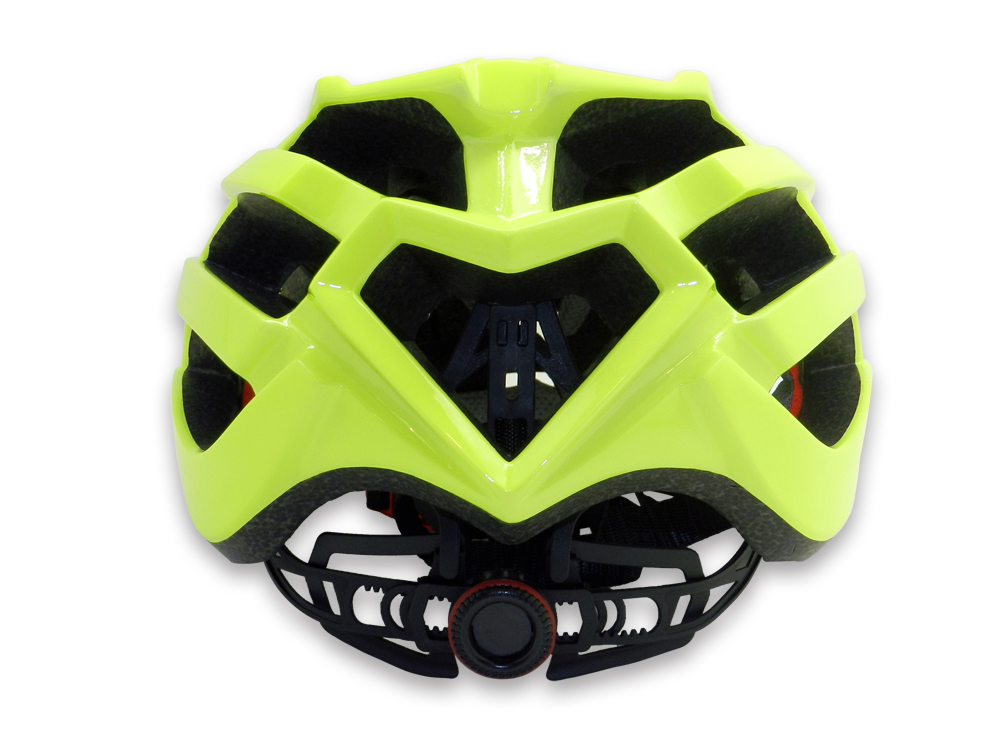Bicycle helmet: how to choose and store a bicycle helmet
Protecting your body while cycling is one of the top priorities after buying a two wheeler. After all, not following simple security measures can lead to very sad consequences. Head injuries during falls occur less frequently than damage to the limbs (abrasions, scratches on the arms and legs), but as practice shows, if they happen, then the consequences are much more serious (concussion, etc.). Therefore, to protect your head while cycling, you should always wear a helmet. Plus, if you are going to participate in any cycling competitions, for example, at the opening of the cycling season, then most of them have this accessory as a must. And here, due to the huge range of bicycle components on the market, the question arises of how to choose a helmet for a bicycle based on the specifics and riding style of a cyclist, which bicycle helmet is best suited, for example, for aggressive riding, and how to determine the size you need. In addition, we will look at the design, materials and principle of operation, as well as tell you how to properly wear and store a bicycle helmet during the winter “bike holidays”.
All bicycle helmets, in fact, are divided into types according to the degree of aggressiveness of the cyclist, which we will discuss below. This must be taken into account when buying a bicycle helmet so as not to overpay for the level of safety that you do not need.
cross country
This type of helmet is great for general cycling, city riding and simple cross-country competition. Due to its lightness, comfort and relatively affordable price, it has become widespread among riders when used for every cycling day. Due to the large number of ventilation holes, the head is well blown with air, which reduces its overheating, especially on hot summer days.
The helmet only protects the top of the head. The temporal and occipital zones are not covered by the body. But this is not really necessary if you do not ride aggressively. But this design saves product weight and improves ventilation. By the way, the average weight is up to 300 grams. If you see a helmet of this type heavier, then it is better to refuse to buy it. The heavier it is, the more tired your neck will be, which will cause discomfort when cycling.
Since bicycle helmets are not subject to mandatory certification in our country, when choosing this accessory for greater safety, you should pay attention to American and European certificates. It's good if this type of helmet has one of these (or all together): ISO9000:2008, CE EN1078, CE EN1077 CPSC 16 CFR 1203, AS/NZS 2063:2008.
This helmet is disposable. With a strong enough impact, its foam base is crushed and broken, which precludes its reuse. Even if you don't see any damage after a hard hit, it's still a good idea to change your helmet. This is due to the fact that hidden microcracks can form in the foam base, which, if dropped again, will not allow the helmet to perform its protective functions. This is facilitated by a large number of ventilation holes.
The cross-country helmet is attached to the head using a system of belts and clamps. On the inside, you can often find a detachable lining, which is easy to remove after riding and wash. Almost all models of cross-country helmets are adjustable in some range according to the diameter of the rider's head. It is carried out using a special rotary lock or slider.
This type of helmet can be equipped with adjustable and non-adjustable visors and reflectors (reflectors), which is optional, but will increase your visibility on the road.
Highway

Road bike helmets are practically no different from cross-country helmets. They have the same design, cover the same parts of the rider's head and have similar certifications. The differences are the absence of a sun visor to improve aerodynamics and enlarged vents in the body.
enduro

Enduro helmets are a cross between cross-country bike helmets and bowler hats (which will be discussed below). This type has similar design features with cross-country and, accordingly, road. It also has well-developed air vents, making this type perfect for everyday riding. It differs from previous models by a more developed protection of the back of the head and temporal lobes of the cyclist's head. Therefore, it is well suited to riders who do not just use the bike as a means of transportation, but also sometimes like to go a little extreme (the key word here is a little). Although this helmet protects the back of the head better, it still falls short of bowler hats in terms of safety.
Enduro helmets, like their predecessors, are disposable (after a more or less strong impact, the helmet must be replaced) and has the same safety certificates. The weight is about the same, about 300 grams. The price of some enduro helmets is almost the same as country models, but the average is still slightly higher.

Bowler hats are called so because of their shape, which to some extent really resembles a bowler hat. Designed for increased protection of the rider's head when performing various tricks on a bicycle, therefore they are a necessary attribute when riding BMX bikes, and other stunt bikes in the style of dirt, street and other types of extreme riding. Plus, this helmet is also perfect for extreme riding on roller skates, skateboards, when going down mountain rivers on a boat, etc. This helmet protects the head of its owner much better due to the almost complete absence of ventilation holes, which increases its strength, and the developed protection of the occipital and temporal areas of the rider's head. Although the lack of ventilation is very bad for using a helmet in the summer. Because of this, the cyclist's head sweats a lot, which can lead to heat stroke. But as they say, increased protection requires sacrifice. Therefore, bowler helmets are not suitable for everyday trips on ordinary bicycles, but are used only when performing tricks.
These helmets are not disposable and can withstand a lot of hard impacts. But many riders still advise changing it at least once every 3 years. This is primarily due to the fact that the foam base is crushed from strong impacts, which worsens its cushioning properties.
The design is not fundamentally different. The bowlers also have a foam base, an outer coating and a system of straps-fixers. Its difference from the previous types is the lack of adjustment to the circumference of the rider's head, which complicates the procedure for selecting a bicycle helmet.
Certifications that are desirable when choosing a bowler hat: CE EN1078, ANSI Z90-4, CPSC.
Due to the almost complete absence of ventilation holes and the increased size of the base, these bike helmets gained a little in weight, which is somewhere around 500 grams. They are also more expensive than enduro and country helmets.
Fullface

These bicycle helmets are from the relatives of motorcycles, and are intended primarily for high-speed descents from the mountain - downhill or freeride. They have all-round head protection, including the rider's chin. Can be fitted with eye shields. If the latter are not available, then you should purchase special protective masks that cover the open part of the face and protect the eyes from stones, dust, etc.  This is the most protected type of bicycle helmet, but it is not advisable to use it even for dirt and street style riding. Only downhill or freeride. Due to the above features, it is much more expensive than all previous models.
This is the most protected type of bicycle helmet, but it is not advisable to use it even for dirt and street style riding. Only downhill or freeride. Due to the above features, it is much more expensive than all previous models.
For greater durability, these bike helmets have a poorly developed ventilation system, and very often a carbon outer layer, which increases impact resistance. The weight of these helmets varies around 1.1 - 1.3 kg, which is almost 700 grams more than bowlers.
Certificates: CPSC 1203, CE EN 1078:2002 + A1:2012 ASTM F1952-15, ASTM F2032-15, ASTM F2040-11.
track

Track helmets for bicycles are used by cyclists to achieve speed records or in circuit cycling, and are designed not only to protect the rider's head when falling, but also to significantly improve the cyclist's aerodynamic characteristics (it is debatable which priority is given to these helmets). Because of this, we can observe similar teardrop shapes. Absolutely not suitable for ordinary bike rides, so it seems to us that it does not make much sense to focus on them.
Children's

Children's bicycle helmets are almost a complete reduced copy of country ones. The only thing is that the vents are slightly smaller. This is done to increase the life of children's helmets, because. according to statistics, a child falls off a bicycle more often, and if the bicycle helmet was full of holes, then the broken ones would have to be changed very often. They are lighter and the inner pads tend to be softer.
Design
All of the above types of bicycle helmets have almost the same design, which we will consider below.

Frame
The body of a bicycle helmet is its main structure, which performs protective functions. It may differ in the form and materials of its constituent components, but the general principle of construction is the same.

Fasteners and accessories
Any bicycle helmet is equipped with clamps, straps and other additional accessories, the task of which is to ensure that the helmet is securely fixed on the cyclist’s head not only during a fall, but throughout the entire trip (because a loose helmet can slide over the eyes, the back of the head or to the side) . It is desirable that the main straps are laid on the top of the helmet, and not attached to the sides (this increases the reliability of its fixation on the rider's head). Every bicycle helmet must have a chin strap. It is desirable that it has a clasp that can be easily unfastened with one hand. On bicycle helmets with adjustment to the diameter of the head, a special rotating lock is used (instead of it there may be a simple elastic band), which can be increased or decreased in volume.  When choosing, pay attention to all plastic parts, as low-quality plastic components can fail before the helmet itself.
When choosing, pay attention to all plastic parts, as low-quality plastic components can fail before the helmet itself.
As a rule, this element is located in the front vents to prevent insects from entering under the helmet. Installed on almost all children's helmets. This component is optional, but desirable, because. agree, it will be slightly pleasant if some wasp gets under the helmet. 
Reflectors and mounts
To increase the safety of cycling at night, additional reflectors (reflectors) or mounts for various electric lighting devices can be installed on a bicycle helmet. They are also not mandatory, but it is better to take care of your safety (especially relevant on children's bicycle helmets).

Fixed mounts for action cameras, such as Go-Pro, are rare. Fortunately, they can be purchased separately and installed on the helmet without any problems. ![]() I would like to note that these mounts that are glued to the helmet are not well suited for country and road models. For these types, it is better to use a special mount with a strap.
I would like to note that these mounts that are glued to the helmet are not well suited for country and road models. For these types, it is better to use a special mount with a strap. 
Additionally
On some female models, there may be a special hole for the hair. This feature, as usual, leads to a rise in the price of the product.
Bicycle helmet expiration date
Strange as it may sound, but bicycle helmets have an expiration date, which does not depend on whether you fell in it or whether it just lay in the closet. This is especially true for road and cross-country models. The thing is that over time, the foam base cracks and deteriorates. On average, even a brand new helmet should be replaced after 5 years from the date of manufacture.
Based on the foregoing, it is categorically not recommended to buy a used bicycle helmet, since you don’t know how old this product is and whether it has been subjected to strong impacts (as it was written earlier, the helmet can be almost perfect externally, but damaged by microcracks inside the base). Therefore, if you still decide to buy a used bicycle helmet, then it is better to do it from familiar cyclists whom you can trust.
How to choose a helmet size
If you decide to buy a bike helmet online, which is not a good idea (we'll tell you why later), but it happens that there are simply no other options, then you should know some parameters, namely the circumference of your head. It is measured on a line 2 cm above the eyebrows.  Knowing this parameter, you can choose a bicycle helmet according to special size tables. I would like to note that you can only blindly choose cross-country, road and enduro helmets (because there is a size adjustment), but other varieties should be measured without fail. Below we provide size chart for adults (men, women), teens and children.
Knowing this parameter, you can choose a bicycle helmet according to special size tables. I would like to note that you can only blindly choose cross-country, road and enduro helmets (because there is a size adjustment), but other varieties should be measured without fail. Below we provide size chart for adults (men, women), teens and children.

How to properly wear a bicycle helmet
An improperly worn helmet may not protect you during a fall or may simply interfere with normal riding.

This video is a good guide on how to properly adjust the position of the helmet.
How to store a bike helmet
The materials from which bicycle helmets are made are very sensitive to high and low temperatures, dampness, as well as to direct sunlight. And if this cannot be avoided during trips, then during storage it is better to protect it from these harmful effects. It is advisable to store the helmet at room temperature, for example in a wardrobe. Helmets cannot be stored on a balcony, in an unheated garage, or in a basement.
If your helmet gets dirty while riding, you can wash it with a cloth and warm water. The use of detergent chemicals is not recommended.
- Since each head is different, you must try it on before buying a helmet (which is why we do not recommend buying it online). Consider several models, because due to the different location of the inner lining, some helmet will be more comfortable for you, but some will not.
- If you're going to be riding in a helmet, for example, to work, to the garage, or just to take leisurely bike rides, then a cross-country or road bike helmet is best for you. If you want to bring a little extreme to riding (a high-speed ride through a forest area or a steep descent from a small hill), then it is better to choose an enduro. For jumping on the ramp and performing various tricks - only a bowler hat. Well, for downhill - full face.
- Choose bright models, as this will attract the attention of motorists, which will increase your safety. Plus, you should consider buying a helmet with reflectors or flashing beacons.
- In the case of buying a bicycle helmet for a child, you should not choose it “for growth”. This is not a sweater. It should sit properly on the head, and not dangle on it. Some children's helmets have diameter adjustment, just like adults'. You can take the one with the minimum value that fits the size of your child's head, but in this case, be sure to measure it in the store.
- If you are buying full-face helmets or a bowler hat, then it is better to look at well-known brands of cycling equipment, for example, Met, Bell, Giro, BBB, etc. When buying a country helmet, you can save a little and take a product from a less famous company (since this helmet is still disposable) . But do not buy Chinese models if you are not sure of their quality.
Related videos
In this video, the features of various bicycle helmets are described in some detail.
Well, here, if anyone is interested, you can see how bicycle helmets are made.
Conclusion
After reading this material, you can clearly answer the questions: how to choose a helmet for a bicycle, and which one is best suited for specific tasks; how to choose a bicycle helmet according to the size of your head using the tables. We learned how to wear and store them correctly, and also touched on some points of choosing in the online store. We can conclude that it is not always worth chasing the most expensive model and buying the one that you simply do not need. Always ride with a helmet, because it is a guarantee of your safety and health. Good luck on the roads!
Categories



